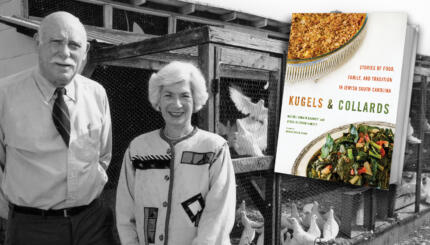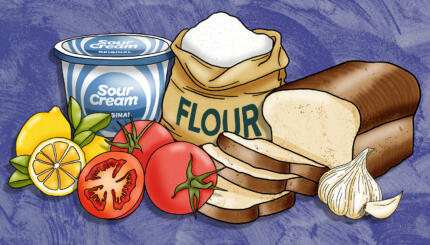Caretaker, mediator, and negotiator. These are all words that might well describe the roles that the biblical Queen Esther played in the Purim story. They are also the words that artist Yona Verwer uses to describe her role as the founder and director of the Jewish Art Salon.
Verwer and six other visual artists are coming together to celebrate Purim and Women’s History Month with the opening of a new exhibition in Brooklyn, curated by Heather G. Stoltz and Julian Voloj, that opens this Saturday.
For several of the artists, like Heather G. Stolz and Elke Reva Sudin, biblical stories and figures are a key inspiration for their work. It was a class assignment on the story of creation and Eve that inspired Stolz’s first quilt and launched her career in textile arts. Sudin, the founder of Drawing Booth, creates portraits that are biblical characters in the contemporary form. She hopes that in capturing their essence, they can be seen much as biblical figures are, as role models and “archetypes of the strong female.” Sudin specifically portrays a diversity of racial and ethnic types in her work to highlight the validity of the full array of Jews in contemporary Jewish life.
By contrast, artist Hirut Yosef draws inspiration from the recent past and in particular the life of her mother. Yosef was born in Ethiopia. When the modern State of Israel was founded her father decided to set out on foot to walk to the Promised Land. Along the way, he met activists who convinced him to learn Hebrew and return to his village and teach the next generation so they would be ready to go to Israel when the time came. In the meantime, he married Yosef’s mother and together they had 12 children. Yosef was 5 years old when Operation Moses brought Ethiopian Jews, including her family, to Israel.
“My mother did all the work, she raised us all on her own. My father was there but in Ethiopian culture, the woman is the foundation of the house. She did all the cooking and the cleaning and she worked. She was tiny physically but did great things. This is the story of many Ethiopian women powerful, humble and creative.”
In addition to all that she did for the family, Yosef’s mother found time to sew and embroider. She died young, in 1993, and Yosef inherited several of her mother’s artistic endeavors. Explains Yosef, “I get inspiration from my mother’s weaving, embroidery, and traditional dresses; my art is a way to tell her story. She was phenomenal.”
Verwer’s art in this exhibition speaks to her own journey both physical and spiritual. As she explains, “The artworks in the exhibit are quite personal. Made in collaboration with Polish-born artist Katarzyna Kozera, they blend the coming-to-America stories of Katarzyna and I with that of my namesake, the biblical prophet Jonah / Yona. It refers to our journey from Catholicism to Judaism, in my case through conversion, which requires ritual immersion, submersion of the body in a pool of water, to symbolize a change-of-soul. The water symbolizes birth as a Jew. In these paintings, these “living” waters are New York’s East River. The shadowy black figures represent the Beit Din.”
Each artist has her own unique Jewish story and it shows in her art. As Goldie Gross explains, “The art I make is from my perspective and is influenced by the values I was taught growing up in a Jewish environment.” The end result is an exhibition that challenges the viewer to expand their understanding of what Jewish art is and how Jewish women express their Jewish experiences.
Join Be’chol Lashon, Repair the World and The Jewish Art Salon for this extraordinary Purim celebration of diversity, Jewish women and art on March 16, 2019 at Repair the World, 808 Nostrand Avenue, Brooklyn. The event, supported by UJA Federation of New York, is free and open to the public. RSVP required.



